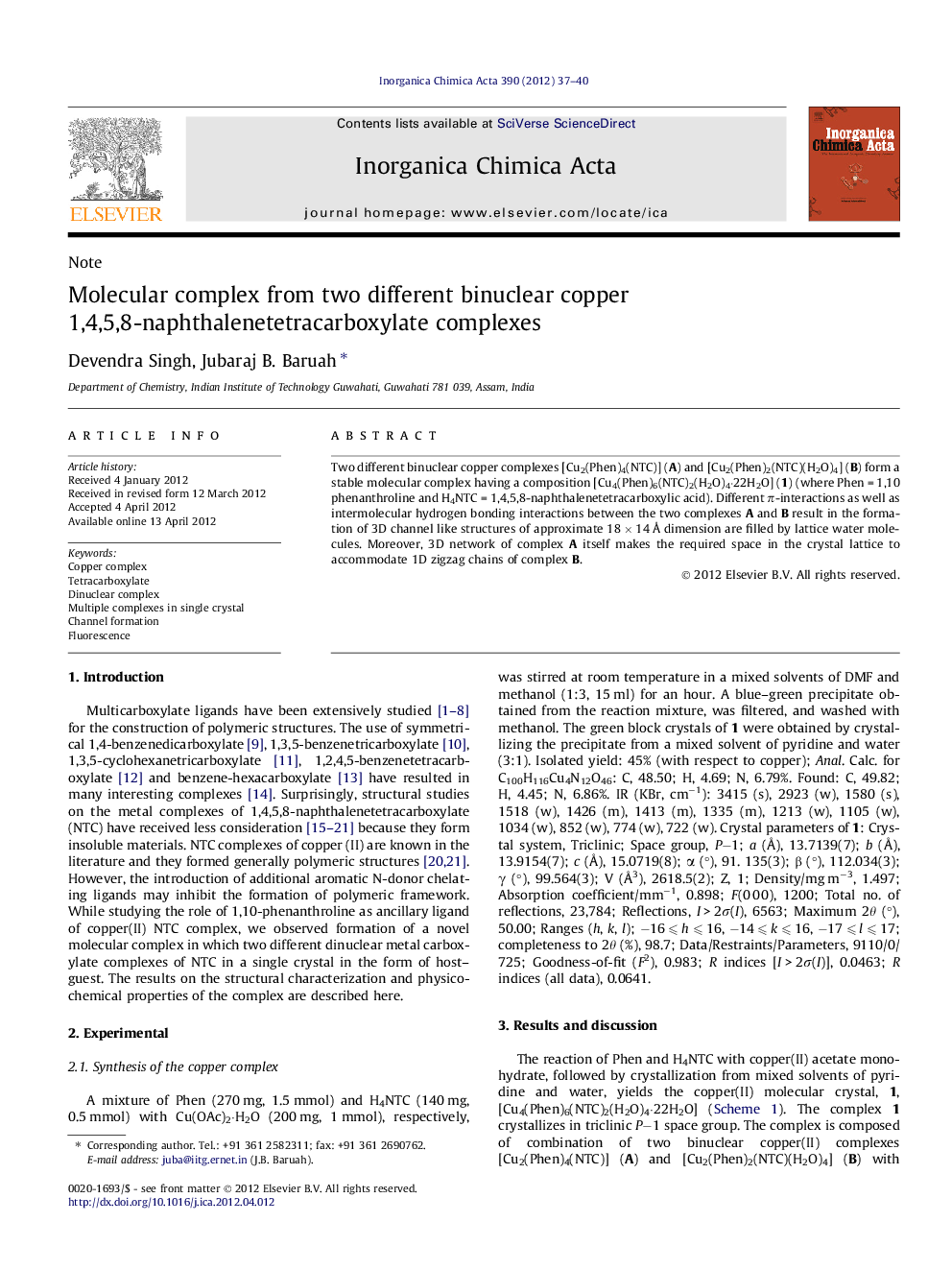| Article ID | Journal | Published Year | Pages | File Type |
|---|---|---|---|---|
| 1312452 | Inorganica Chimica Acta | 2012 | 4 Pages |
Two different binuclear copper complexes [Cu2(Phen)4(NTC)] (A) and [Cu2(Phen)2(NTC)(H2O)4] (B) form a stable molecular complex having a composition [Cu4(Phen)6(NTC)2(H2O)4·22H2O] (1) (where Phen = 1,10 phenanthroline and H4NTC = 1,4,5,8-naphthalenetetracarboxylic acid). Different π-interactions as well as intermolecular hydrogen bonding interactions between the two complexes A and B result in the formation of 3D channel like structures of approximate 18 × 14 Å dimension are filled by lattice water molecules. Moreover, 3D network of complex A itself makes the required space in the crystal lattice to accommodate 1D zigzag chains of complex B.
Graphical abstractHost–guest type structure is generated from two different binuclear copper complexes namely [Cu2(Phen)4(NTC)] (A) and [Cu2(Phen)2(NTC)(H2O)4] (B). The complex having a composition [Cu4(Phen)6(NTC)2(H2O)4·22H2O] (where Phen = 1,10 phenanthroline and H4NTC = 1,4,5,8-naphthalenetetracarboxylic acid) is structurally characterized.Figure optionsDownload full-size imageDownload as PowerPoint slideHighlights► Molecular complex [Cu2(Phen)4(NTC)]·[Cu2(Phen)2(NTC)(H2O)4] is structurally characterized. ► Self host–guest type structure is generated from two different binuclear copper complexes. ► 3D channel like structures are formed, which are filled by water molecules.
